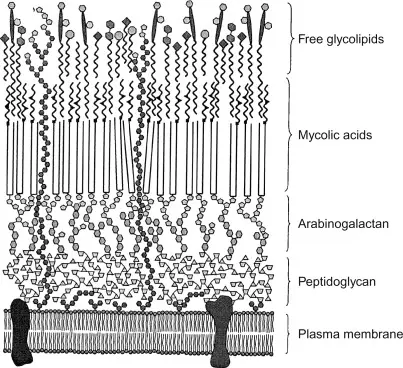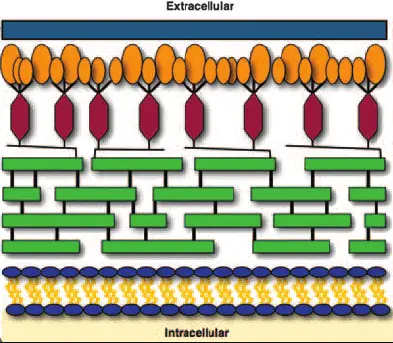Mycobacterial Cell Wall: Structure and Properties
The cell wall of mycobacteria is one of the most distinctive features of Mycobacterium tuberculosis and related species. Its unique composition provides protection, survival advantages, and plays a role in host–pathogen interactions.
1. Composition of the Cell Wall
- Peptidoglycan: The base layer that provides rigidity and shape.
- Arabinogalactan: A polysaccharide that links the peptidoglycan to lipids.
- Mycolic Acids: Long-chain fatty acids that create an impermeable barrier.
- Lipoarabinomannans (LAMs): Glycolipids involved in modulating interactions with host cells.
2. Special Properties
- Impermeability: Limits the penetration of many molecules.
- Environmental Resistance: Protects against external stress such as pH changes, oxidative stress, and desiccation.
- Acid-Fast Staining: The unique wall structure allows identification of mycobacteria using Ziehl–Neelsen staining.

3. Role in Pathogenicity
- The complex wall contributes to the persistence of the bacterium in host environments.
- Certain components, such as LAM, are directly involved in interactions with immune cells.

4. Applications in Research
- The cell wall is studied as a structural and biochemical model to understand bacterial survival.
- Research tools include biochemical assays, electron microscopy, and spectrometry for analyzing its composition.
" The cell wall of mycobacteria is a highly specialized structure that combines complex carbohydrates, lipids, and proteins. Its unique composition provides impermeability, environmental resistance, and contributes to the persistence of Mycobacterium tuberculosis. Because of these properties, the mycobacterial cell wall remains a central focus of microbiological and structural research, offering valuable insights into the biology and adaptability of pathogenic mycobacteria. "


